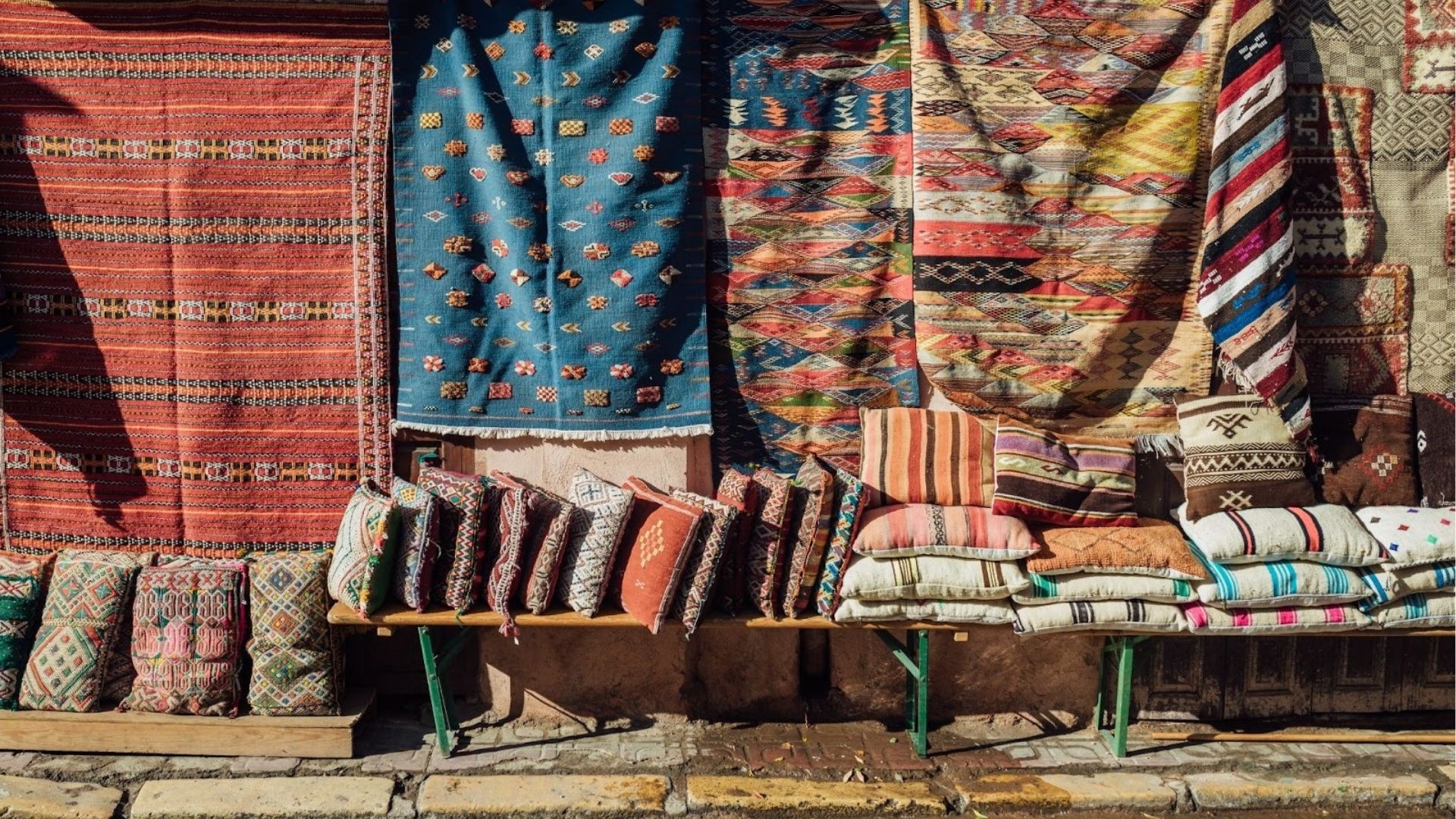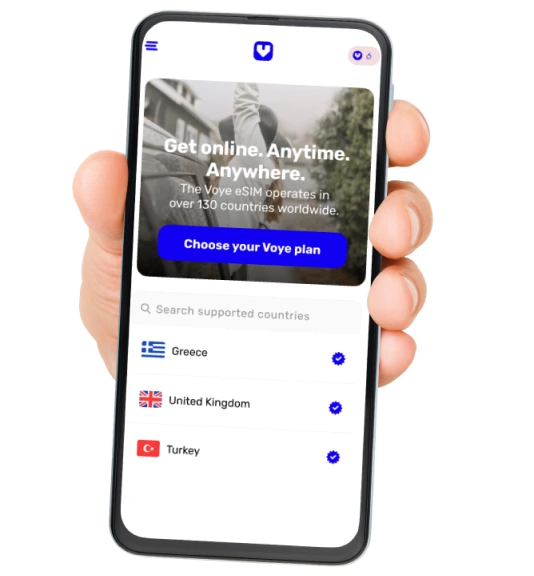Note that iPhone devices from Mainland China aren’t eSIM compatible. Also iPhone devices from Hong Kong and Macao aren’t compatible (except for iPhone 13 Mini, iPhone 12 Mini, iPhone SE 2020 and iPhone XS)
Annaba, a Mediterranean gem in eastern Algeria, is a city where history and craftsmanship intertwine. Beyond its beaches and Roman ruins, its true spirit lives in the bustling souks and quiet boutiques filled with handmade carpets, ceramics, and copperware. Each market visit immerses travelers in a world of color, aroma, and tradition, where every item carries a story passed down through generations.
Shopping in Annaba isn’t just about buying – it’s about connection. Between friendly exchanges with artisans and the rhythmic energy of the markets, visitors discover a culture that values authenticity, artistry, and the timeless beauty of Algerian craftsmanship.
Exploring Traditional Markets in Annaba
Annaba’s shopping culture is deeply rooted in its traditional markets, which remain some of the best places to experience local life. Known as souks, these markets are more than places of commerce; they are social spaces where neighbours meet, stories are shared, and the rhythms of daily life unfold in full view. For a traveler, entering a souk is like walking into a theatre of colour and movement, with carpets draped over stalls, handwoven baskets stacked high, and vendors calling out their best prices.
The Heartbeat of Annaba’s Souks
One of the most distinctive aspects of Annaba’s souks is their energy. Every corner feels alive – from merchants weighing spices to craftsmen shaping copperware with rhythmic precision. Sounds of bargaining and laughter fill the air, making every exchange personal and rooted in tradition. For more cultural discoveries, explore our Trip to Setif guide for another glimpse into Algeria’s vibrant markets and heritage.
Stay Connected in Algeria
Travel smarter in Annaba with instant eSIM activation anywhere.
Popular Marketplaces
Certain markets stand out as essential stops for those wishing to experience Annaba’s shopping culture. The central souk near the old town offers a wide variety of goods, from daily necessities to artisanal crafts, making it a favourite for both locals and visitors. Another well-known stop is the artisan quarter, where workshops double as storefronts. This allows travelers not only to purchase souvenirs but also to see the process of creation first-hand. Watching a weaver at work or a potter shaping clay deepens the appreciation for what eventually becomes a treasured keepsake.
The Art of Bargaining
Bargaining is an expected part of market life in Annaba, but it is important to understand it as a cultural practice rather than a contest. Vendors expect a discussion about price, yet courtesy is essential. A respectful smile, a few greetings in Arabic or French, and patience often lead to better results than blunt negotiations. Travelers should remember that while bargains are possible, the time and effort artisans put into their crafts deserve fair recognition. The real reward lies in the interaction itself, which often feels like part of the purchase.
Seasonal Shopping and Festive Times
The character of Annaba’s markets shifts with the seasons. During major festivals, stalls are decorated with additional flair, and certain crafts, particularly textiles and jewellery, become more prominent. These periods provide not only a greater variety of products but also a stronger sense of cultural immersion. Travelers arriving at these times will find that the shopping experience is interwoven with music, food, and celebration, making the act of buying souvenirs even more memorable.
Blending Tradition with Traveler Convenience
Modern travelers exploring these souks can enhance their experience with small conveniences. Digital maps help in navigating winding alleys, and online translation tools bridge language gaps. Staying connected through an eSIM service like Voye Global means these tools are always accessible, without the need to juggle multiple SIM cards. Whether searching for a specific market or confirming a fair price online, this seamless connectivity allows the focus to stay on the cultural experience.
Shop Souks Without Worry
Enjoy maps and payments with seamless mobile connectivity always.
Handwoven Carpets and Rugs: Annaba’s Timeless Treasures
Among all the souvenirs one might bring home from Annaba, few compare to the prestige of its handwoven carpets and rugs. These textiles are more than decorative items; they are embodiments of Algerian identity, woven with skill, patience, and symbolism. For centuries, carpets have held a central place in Algerian homes, often passed down through generations as family heirlooms. In Annaba, travelers will find these treasures not just in boutiques but also in workshops and souks, where artisans continue practices inherited from their ancestors.
A History Woven into Every Thread
Carpet weaving in Algeria traces back to Berber traditions, with influences from Arab, Ottoman, and Mediterranean cultures. Each region developed distinctive styles, and Annaba’s carpets are known for combining durability with elegance. Many patterns tell stories of protection, fertility, and prosperity, while colours often represent aspects of nature-the red of earth, the blue of sky, and the green of fertility. Understanding this heritage helps travelers see a carpet not only as an object of beauty but also as a narrative crafted in wool.
The Craftsmanship of Annaba’s Weavers
What sets Annaba’s carpets apart is the meticulous attention to detail. Most are made with hand-spun wool, dyed using natural pigments, and woven on traditional looms. The process can take weeks or even months, depending on the size and complexity of the design. Every knot carries the artisan’s touch, and the irregularities that appear in patterns are often what make each piece unique. Watching a weaver at work is an experience in itself, revealing the patience and dedication required to create these timeless textiles.
Recognising Authenticity
Travelers hoping to buy a genuine Annaba carpet should know a few signs of authenticity. Handmade carpets typically have knots that are visible on the underside, with small variations in weave that indicate human craftsmanship. The colours, often achieved with natural dyes, have a depth and warmth absent from machine-made imitations. Asking vendors about the origin of a piece or even the name of the weaver often sparks conversation and builds trust. For visitors, understanding these details ensures they bring home not just a purchase but a meaningful connection to Annaba’s artisans.
Styles and Symbolism
Annaba’s carpets are diverse in style. Some feature geometric motifs reflecting Berber heritage, while others incorporate floral designs influenced by Mediterranean aesthetics. Symbolism plays an important role: diamonds may signify protection, while zigzag patterns could represent water and continuity. For many locals, these carpets are not simply decorations but objects believed to carry good fortune. Travelers who appreciate these layers of meaning will find that each purchase carries a richness beyond its appearance.
Explore Annaba with Ease
Navigate markets, translate deals, and stay online wherever you go.
Practical Considerations for Travelers
Purchasing a carpet in Annaba can be an exciting yet challenging process. Carpets vary greatly in size and price, so it is wise for travelers to plan how they will transport them. Many vendors offer shipping services, though this requires careful discussion to ensure the item arrives safely. Bargaining is expected, but respect for the labour behind each piece should guide the conversation. Staying connected digitally-whether to compare prices, translate terms, or arrange shipping-becomes simpler with a reliable eSIM such as Voye Global, which ensures smooth communication throughout the process.
Carpets as Living Culture
Ultimately, bringing home a handwoven carpet from Annaba is like carrying a piece of the city’s culture across borders. These textiles are not just souvenirs but living traditions, tied to the identity and history of Algeria. They are reminders that craftsmanship remains an art form in everyday life, still cherished and practised by the people of Annaba. For travelers, owning one of these rugs means owning more than fabric-it means holding a fragment of Annaba’s story.
Local Crafts, Jewellery, and Souvenirs Worth Collecting
Annaba’s shopping scene goes far beyond its famous carpets. In its markets and workshops, travelers find ceramics, copperware, jewelry, and handwoven baskets that reflect true Algerian artistry. For a broader view of the country’s cultural treasures, explore our Algeria Travel Guide and plan your next multi-city journey.
Pottery and Ceramics
One of the most eye-catching elements in Annaba’s markets is its pottery. Local artisans shape clay into plates, bowls, and decorative tiles, often painted with geometric or floral patterns that carry echoes of Berber and Mediterranean design. These items serve both functional and decorative purposes. Travelers often purchase ceramic tableware not only to display at home but to use in their kitchens, creating a tangible link between Algerian daily life and their own. Each piece, even when simple in appearance, carries subtle differences that show the hand of its maker.
Copperware and Engraved Metalwork
Another signature craft in Annaba is copperware, with stalls displaying everything from trays to teapots, intricately engraved with traditional motifs. The sound of artisans hammering copper sheets is part of the market’s soundtrack, and many visitors find themselves stopping to watch the process. Owning a hand-engraved copper tray or decorative lamp means carrying home not only a piece of craftsmanship but also a fragment of Algerian hospitality, where tea drinking remains a deeply rooted social ritual.
Jewellery: Silver and Coral Traditions
Jewellery holds a special place in Annaba’s shopping heritage. Silver is the metal most associated with traditional Algerian ornaments, often adorned with intricate filigree or set with semi-precious stones. Coral, harvested along Algeria’s Mediterranean coast, is another distinctive material used in necklaces, earrings, and bracelets. These items are prized not only for their beauty but also for their symbolic value, often believed to bring protection and luck. For travelers, buying a piece of jewellery in Annaba offers both an elegant souvenir and a link to local tradition.
Handwoven Baskets and Everyday Souvenirs
While carpets are the most celebrated woven items in Annaba, smaller handwoven products such as baskets, mats, and handbags are also popular. Made from palm fibres and reeds, these items combine practicality with artistry. Lightweight and easy to transport, they make excellent gifts for friends and family. Other souvenirs include leather goods, embroidered textiles, and even simple spice packets wrapped with care by market vendors. These everyday items might seem humble, but they embody the authentic flavour of Annaba’s markets.
How Connectivity Enhances the Experience
Exploring the breadth of crafts in Annaba can be overwhelming, especially for visitors unfamiliar with the city’s layout. Staying connected digitally provides clear advantages-whether locating artisan workshops, using translation tools, or sharing photos with family before deciding on a purchase. Reliable eSIM for Algeria by Voye Global makes this easier by removing the hassle of changing physical SIM cards, ensuring that travelers remain focused on the experience rather than the logistics.
Beyond Objects: A Deeper Connection
Shopping for crafts in Annaba is not only about accumulating objects but about forming connections with the culture. A ceramic plate, a silver bracelet, or a woven basket becomes a reminder of conversations, smiles, and shared moments with artisans. For many travelers, these purchases hold more value than luxury goods because they carry the authenticity of place. Each item is a fragment of Annaba’s story, ready to be taken home and cherished for years to come.
Practical Tips for Travelers: Making the Most of Annaba’s Shopping

Best Times to Shop
Visit Annaba’s markets in the mornings or late afternoons for the best selection and atmosphere. Avoid midday heat and Fridays when activity slows. Early visits offer calm browsing, while peak hours reveal the full energy of the souks.
Budgeting and Avoiding Tourist Traps
Set a budget and compare prices across stalls before buying. Handcrafted goods like carpets and copperware can be pricey, while smaller souvenirs are more affordable. Be cautious of overly uniform or cheap items that may not be authentic.
Carrying and Shipping Souvenirs
Confirm packaging and delivery details in writing when shipping larger items. For smaller purchases, use a padded bag or suitcase. Plan bigger buys near the end of your trip to avoid carrying them around.
Staying Connected While Shopping
Reliable internet makes navigating souks, translating, and arranging shipments easier. Staying connected ensures smooth communication and lets travelers enjoy the experience without logistical worries.
Your Trip, Always Online
Stay connected across Algeria with fast, reliable eSIM data.
Making Shopping Part of the Journey
Shopping in Annaba is about connection, not just commerce. Every handcrafted item tells a story – a reflection of Algerian culture, artistry, and warmth – turning your purchases into meaningful memories of your travels.
Conclusion
Annaba’s markets are living reflections of Algeria’s artistry and hospitality. From the rhythmic hammering of copper to the vibrant hues of handwoven carpets and baskets, every stall tells a story. The real beauty of shopping here lies in the human connection – the warm exchanges with artisans and the chance to bring home a piece of their heritage.
With the convenience of Voye Global’s eSIM for Algeria, exploring these bustling souks becomes effortless. Staying connected allows travelers to navigate easily, translate on the go, and shop with confidence, turning every purchase into a meaningful part of their Algerian journey.
FAQ
1. How does Voye Global’s eSIM help in Annaba?
It activates instantly, keeping travelers online for maps, translations, and payments without SIM swaps.
2. What souvenirs is Annaba known for?
Handwoven carpets, copperware, silver jewelry, ceramics, and woven baskets.
3. Can I use Voye Global’s eSIM for calls and data?
Yes, it supports high-speed data and internet-based calls across devices.
4. Is bargaining common in Annaba?
Yes, polite and respectful bargaining is part of the shopping culture.
5. Does Voye Global’s eSIM work in other countries?
Yes, it covers multiple destinations for seamless regional travel.
6. How do I spot an authentic carpet?
Look for visible knots, natural dyes, and slight imperfections – signs of handweaving.
7. How fast is eSIM activation?
Instant – just scan the QR code to connect within minutes.
8. Are markets open daily in Annaba?
Yes, most open daily except Fridays, with mornings and evenings being busiest.

Seamless Mobile Data Everywhere

















